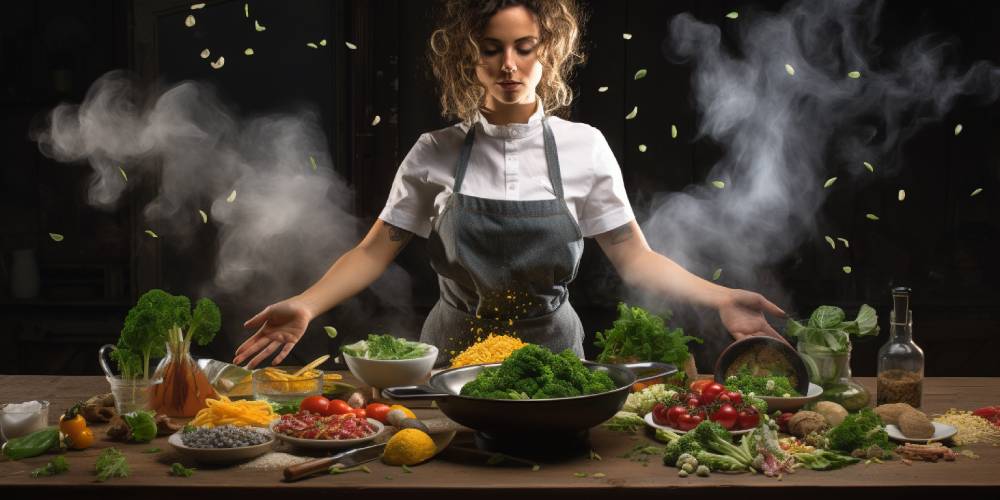
The journey to vegan cooking is like embarking on a new adventure – it’s thrilling, enlightening, and, yes, occasionally a bit rocky. After years in the vegan culinary world, I’ve observed some patterns, both in my kitchen and in those of others. We’re going to dive into five common mistakes people often make when preparing vegan dishes and, most importantly, how to sidestep these pitfalls. So, grab your favorite apron and let’s get started!
1. Overlooking Protein Sources
Oh, the protein question! I can’t count the number of times I’ve been asked, “But where do you get your protein from?” Surprisingly, the issue isn’t the availability of vegan protein sources. Instead, it’s often a simple oversight during meal planning.
Firstly, it’s worth noting that a multitude of plants are bursting with protein. Legumes, grains, and even some veggies pack a protein punch. For instance, lentils, quinoa, and chickpeas are some of the star players in the vegan protein game. However, the mistake many make is not incorporating them into their dishes frequently enough.
Solution? Make it a habit to include at least one robust protein source in every meal. Whether you’re whipping up a lentil soup or sprinkling some hemp seeds onto your salad, ensure you’re fueling your body with what it needs.
2. Relying Heavily on Processed Vegan Foods
Ah, the allure of convenience. We’ve all been there – after a long day, who wants to cook? Vegan frozen pizzas, meat substitutes, and ready-made meals can be a lifesaver. But here’s the kicker: relying on them too often can deprive you of essential nutrients.
While these products can be delicious and, let’s admit it, super convenient, they often contain additives, high sodium levels, and other not-so-great ingredients. And let’s not even start on how some of them can take a hefty bite out of your wallet!
What’s the fix? It’s simple. Aim to strike a balance. Processed vegan foods can have a place in your diet, but they shouldn’t dominate it. Embrace whole foods, play with spices, and relish the vibrant colors and textures that nature provides. Plus, preparing meals from scratch allows you to control what goes into your food, ensuring a healthier, more balanced diet.
3. Not Seasoning Enough
If I had a dime for every time I’ve heard someone claim vegan food is bland, I’d probably be on a beach somewhere sipping coconut water. But the reality? Vegan dishes, like any cuisine, require proper seasoning.
Too often, those new to vegan cooking underestimate the power of spices. Seasoning doesn’t just mean salt and pepper. Think aromatic herbs, spices like turmeric and cumin, and even condiments like soy sauce or miso.
Here’s a tip: Experiment with different seasonings. Dabble with combinations, and remember, tasting as you go is key! By doing so, you can transform a dull dish into a mouthwatering masterpiece.
4. Skipping Fat Completely
In their quest for health, some vegans opt to eliminate fats entirely. But here’s a fun fact: Not all fats are created equal. While it’s wise to limit unhealthy fats, certain fats can be beneficial.
Avocado, nuts, seeds, and olive oil aren’t just tasty – they provide the fats your body needs. These good fats can enhance brain function, skin health, and even help absorb certain nutrients.
So, what’s the game plan? Don’t shun fats; instead, choose wisely. A splash of olive oil on your salad or a sprinkle of chia seeds in your smoothie can make all the difference, both in taste and health benefits.
5. Forgetting About Texture
Texture plays a pivotal role in how we perceive food. Think about it. Would you enjoy a meal that’s entirely mushy or just one single texture? Probably not.
A frequent oversight in vegan cooking is neglecting the importance of contrasting textures. Luckily, this is an easy fix.
Try this: Combine different cooking methods in one dish. If you’re making a creamy soup, add some roasted veggies or crunchy seeds on top. Or, mix raw and cooked elements in your salads for that perfect bite every time.
In Conclusion
Navigating the vegan culinary landscape can be a joy, but like any skill, it requires practice and a sprinkle of knowledge. By being aware of these common mistakes and armed with solutions, you’re well on your way to creating delicious, nutritious, and satisfying vegan meals. Happy cooking!
